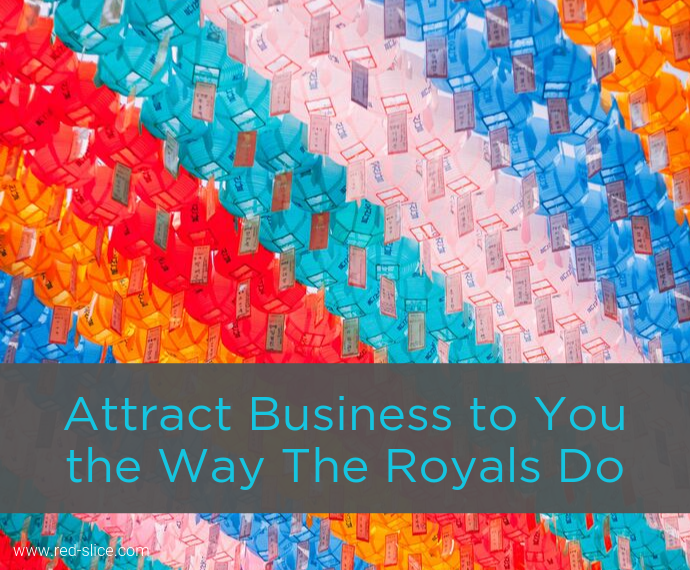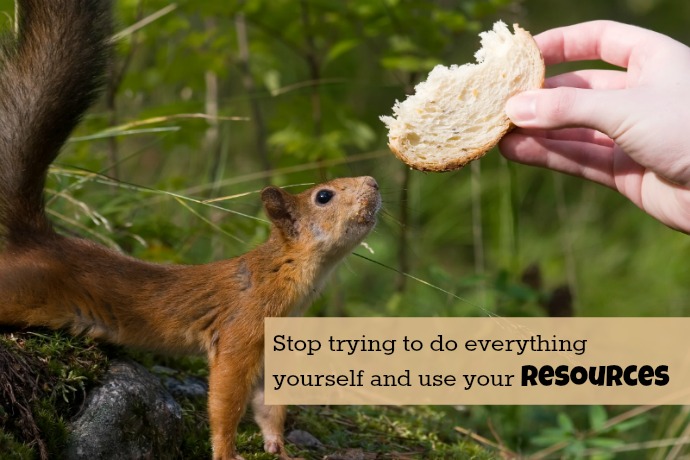
Time for something completely different! Ready to arrange your space to attract more clients, revenue, and success? Today’s guest post is from Linda Rubright, founder of happyhousefengshui.com. Linda has been practicing feng shui for over a decade. She puts a modern, easy to understand spin on an ancient practice to help people quickly and simply attract more love, wealth, health and happiness to their lives.
Royalty in the east determined many, many years ago that arranging their homes (i.e. palaces) in a particular way allowed them to attract more health, wealth, business, love and happiness. It took the western world and their royalty, including the likes of Harry and Meghan, a few millennia to catch onto this (feng shui), but when they did, they tweaked this practice a bit more to their liking (read: they dumbed it way down) and began seeing love, wealth, health and happiness flow their way.
The good news for us non-aristocratic types is we don’t have to be bothered by all the royal formalities and relentless paparazzi to make the same small tweaks to our homes to attract good things into our lives – including more and better business. Want more clients in your life and money in your bank account? Do as many of these as you can.
Get a Very Welcoming Welcome Mat for Your Front Door
The front door of the home, the door the architect of the home would call the front door, is considered the entryway to all the energy in your house. It is also the most important area related to your career according to feng shui. For this reason, make your front door feel very, very welcoming. Starting by tossing your old tattered welcome mat and get a fresh, new cheerful one.
Add Inviting Touches to Your Main Entrance
Good energy at the entry of your home invites good energy into your home. Consider adding a cheerful wreath, a pot of flowers and/or an outdoor statue near your front door. Definitely toss any gargoyles, lions or signage that feel negative or unwelcoming – we don’t want to scare the energy of your new clients and business away.
Make the Area Around Your Front Door Clean and 100% Clutter Free
As the front door is both the primary entrance for all energy that enters the home and, in feng shui, the most important area related to your career, it is extremely important this area is very clean. Get rid of any dust, dirt, clutter, messes, mail piles, stinky shoes, unused boots, piles of coats and general eyesores/disorganization inside, outside and around the front door.
Anytime someone tells me they are struggling with business and/or getting new clients, I always ask how their front door is looking. They typically tell me it is a dumping ground for all things that need to be taken care of – someday. I suggest they clean it up and days later they let me know about new business that fell, seemingly, out of the sky. The clients and business are out there – they just want a clean front door to walk through.
Actually Use Your Front Door
Whoever said “side door guests are best” clearly did not understand the ways of feng shui. If your front door is neglected and never used, the energy entering your home and around your career and business might feel the same way. To change this, have friends enter through your front door, use it as much as possible in your own comings and goings, have pizza delivered to it – just keep energy moving and not stagnant around your front door. Why? Because you do not want stagnant and stuck energy associated with your career and business.
Weed (Sorry)
If you live in a home and outside your front door are weeds – those things need to go – pronto. The only things we want growing around your literal and metaphorical career area are the good things. Start weedin’.
Get Rid of All Dead Plants IMMEDIATELY
Dead plants are dead energy, and you absolutely do not want “dead” energy entering your home or related to your career area. Toss those babies in the compost pile.
Put Symbols of What You are Trying to Achieve Near Your Front Door
Is there a particular client you want to have or grow? Is there a certain financial number you are trying to hit? Put symbols of what you are trying to achieve, the clients you are trying to attract or even a list of your goals near your front door. The good thing about feng shui is nothing has to be seen to work. Feel free to put these things in a drawer, behind a piece of furniture, behind art, etc. – just make sure it is near your front door!
Remove the Career Killers from Your Office, Cube and Desk
While there are things that help you attract what you want, there are also things that are roadblocks in getting what you want. To make sure you are not doing anything to inadvertently detract good things from entering your life, make sure to get rid of as many of these “career killers” as possible in and around your office, desk or cube.
- Clutter
- Dirt
- Dust
- Messes
- Symbols or reminders of bad memories
- Symbols or reminders of who you do not want to be
- Things you no longer use
- Anything broken, torn or no longer working
- Files and papers you no longer need or use (this includes electronic files)
And Bonus Tip: Use all of the tips and tricks above regarding the front door of your home for the entryway to your office or cube.
Have Your Desk Chair Arranged So Your Back Is Against A Wall
You know how the boss always has her back against a wall and her underlings sit in cubes where people can sneak up behind them? There are big energetic consequences to this. As you may have guessed, it is best to have the boss’ position (for more reasons that one, right?). Arrange your desk or office so your back is against a wall, and you can see the door or the entrance where people would come up to you. If that is not possible, try putting a mirror up so you can see who is coming behind you.
Add a Change Bowl in the Upper Left Corner of Your Desk or Office
Stand either in the doorway of your office or if you don’t have an office, sit where you typically would at your desk. Point to the farthest upper left corner from you. This area is your money area in feng shui. To attract more money into your life, put a change bowl here and try as much as possible, not to take money out of it. Also try as much as possible to add that pocket change you have to it. You can put other items associated with money in your change bowl such as jewelry (when I lose an earring I always put the other one here), lottery tickets, gift cards with a few extra dollars on it, foreign currency or even Monopoly money. Extra credit for a change bowl that is purple, gold, green or red (the colors associated with wealth in feng shui).
Put Your Business Wishes in a Silver Box in the Lower Right Corner of Your Desk or Office
Yes, feng shui can make your wishes come true – especially if you make it known what they are. Write down a list of up to three things you want to happen, but write them as if they have already happened. For example, “I am elated I increased my revenue by 30% in 2019. I am so happy I signed XYZ new client in October of 2019.” Put these three wishes inside a silver box (I have made them out of tin foil before – they don’t have to be fancy). Then, go to your office or desk and either stand in the entrance of the office or sit down at your desk. Put your silver box near the lower right most corner of your desk or office.
Have any questions? Want clarity on anything?
Email me (I happily answer questions for free) or visit happyhousefengshui.com for more feng shui tips and ideas.





